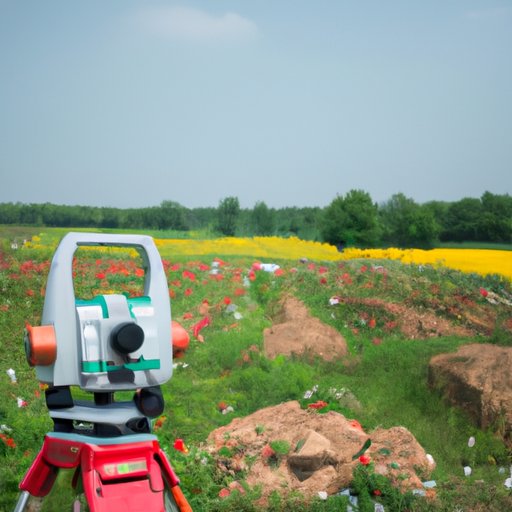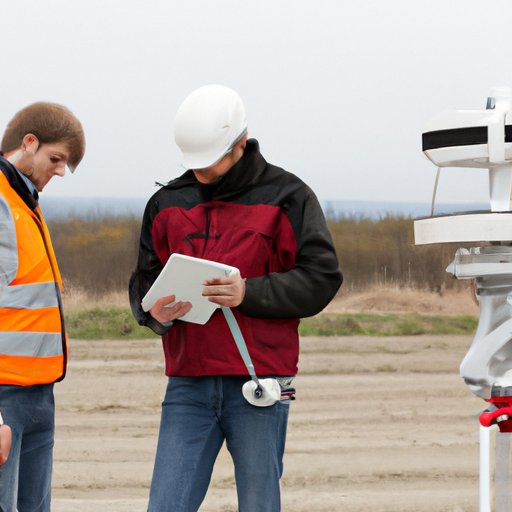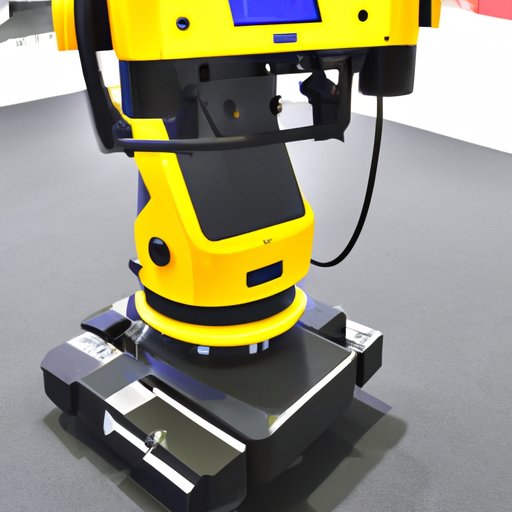Introduction
A robotic total station is an automated surveying instrument used to measure distances, angles, and coordinates in the field. This sophisticated technology combines the power of a robotic total station with the convenience of a traditional total station, providing surveyors with greater accuracy and precision when conducting measurements in the field. In this article, we will explore what a robotic total station is, as well as the benefits and advantages that it offers.
A Comprehensive Guide to Robotic Total Stations
In order to understand the technology behind robotic total stations, it is important to first understand the basics of traditional total stations. A traditional total station is a survey instrument that combines an electronic theodolite with an electronic distance meter (EDM). The EDM measures the distance from the instrument to the target, while the theodolite measures horizontal and vertical angles. Together, these two components allow the surveyor to accurately measure points in the field.
Robotic total stations take this technology one step further by adding robotic functions to the traditional total station. This allows the instrument to be operated remotely, eliminating the need for a human operator. Instead, the robotic total station can be programmed to automatically acquire and measure points in the field. The instrument can also be programmed to move autonomously, allowing it to quickly and accurately measure multiple points without the need for manual operation.
Exploring the Benefits of Robotic Total Stations
Robotic total stations offer a number of benefits and advantages over traditional total stations. Here are some of the key benefits that robotic total stations provide:
Increased Accuracy
Robotic total stations offer greater accuracy than traditional total stations. This is because the instrument is able to measure points from a greater distance, allowing for more precise measurements. Additionally, robotic total stations use advanced algorithms to calculate points more accurately than a human operator could. This ensures that surveyors get accurate results every time.
Enhanced Efficiency
Robotic total stations are much faster than traditional total stations. Because they are operated remotely, they can quickly measure multiple points without the need for manual operation. This eliminates the need for multiple people to be on site, saving time and money.
Improved Safety
Robotic total stations eliminate the need for a human operator to be in the field. This means that surveyors can conduct their work from a safe distance, reducing the risk of injury or accidents.

The Advantages of Using Robotic Total Stations in the Field
Robotic total stations offer a number of advantages in the field. Here are some of the key advantages of using robotic total stations:
Cost Savings
Robotic total stations are more cost-effective than traditional total stations. They require fewer personnel to operate, and they eliminate the need for additional equipment, such as ladders and scaffolding. This saves both time and money.
Reduced Labor
Robotic total stations reduce the amount of labor required to complete a survey. Since the instrument is operated remotely, surveyors can measure multiple points quickly and accurately without the need for manual operation.
Increased Productivity
Robotic total stations increase productivity in the field. Because they are faster and more efficient, surveyors can complete surveys in less time and with fewer resources. This allows surveyors to focus their efforts on other tasks, such as data analysis and report writing.
Conclusion
Robotic total stations are revolutionizing construction and surveying by providing increased accuracy, enhanced efficiency, improved safety, cost savings, reduced labor, and increased productivity. This powerful technology is changing the way surveyors work, making it easier and more efficient to measure points in the field. If you’re looking for a way to improve your surveying operations, a robotic total station may be the right solution for you.

Summary of Benefits and Advantages
Robotic total stations offer a number of benefits and advantages, including increased accuracy, enhanced efficiency, improved safety, cost savings, reduced labor, and increased productivity. This makes them an excellent choice for surveyors who want to make their work more efficient and accurate.

Final Thoughts on Robotic Total Stations
Robotic total stations are revolutionizing construction and surveying by providing increased accuracy, enhanced efficiency, improved safety, cost savings, reduced labor, and increased productivity. If you’re looking for a way to improve your surveying operations, a robotic total station may be the right solution for you.
(Note: Is this article not meeting your expectations? Do you have knowledge or insights to share? Unlock new opportunities and expand your reach by joining our authors team. Click Registration to join us and share your expertise with our readers.)
